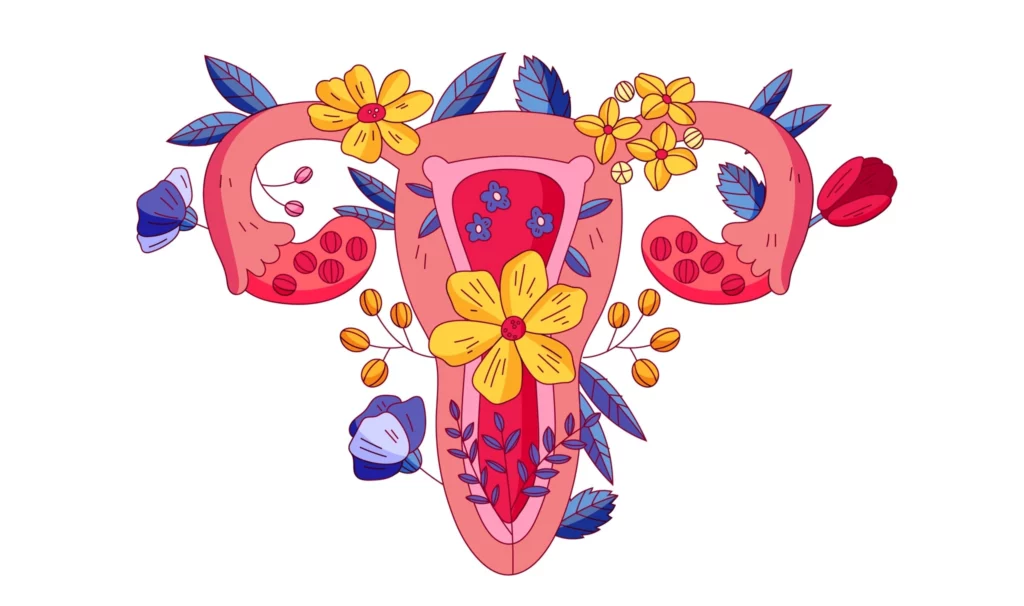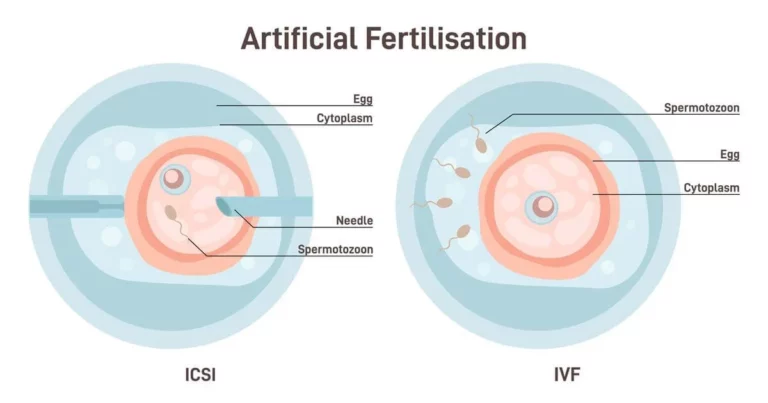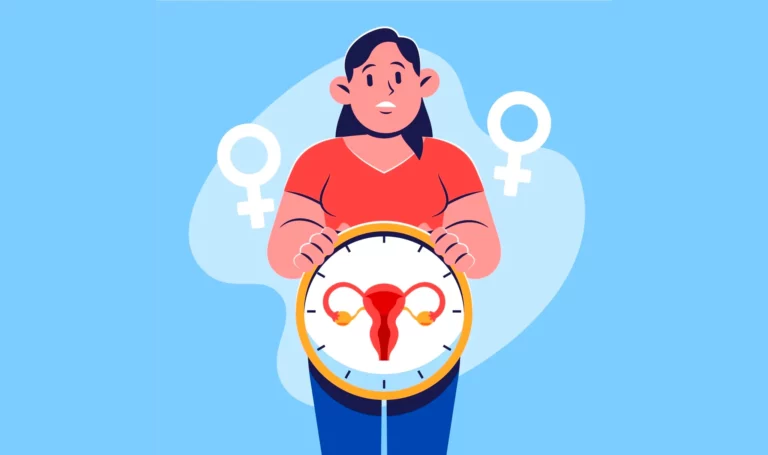Are you diagnosed to have small white spots, bumps or pimples on your cervix during routine examination?
What are they? What can you do? And, when do you need to worry?
These opaque whitish or yellowish spots, bumps or pimples are a type of cysts that is common in childearing women.
This article comprehensively explains these cysts, its causes, associated symptoms, available treatments, effect on pregnancy, and when a woman should be worried about them.
Increase your pregnancy chances with Nory Ovulation Kit
What are white spots, bumps or pimples on the cervix?
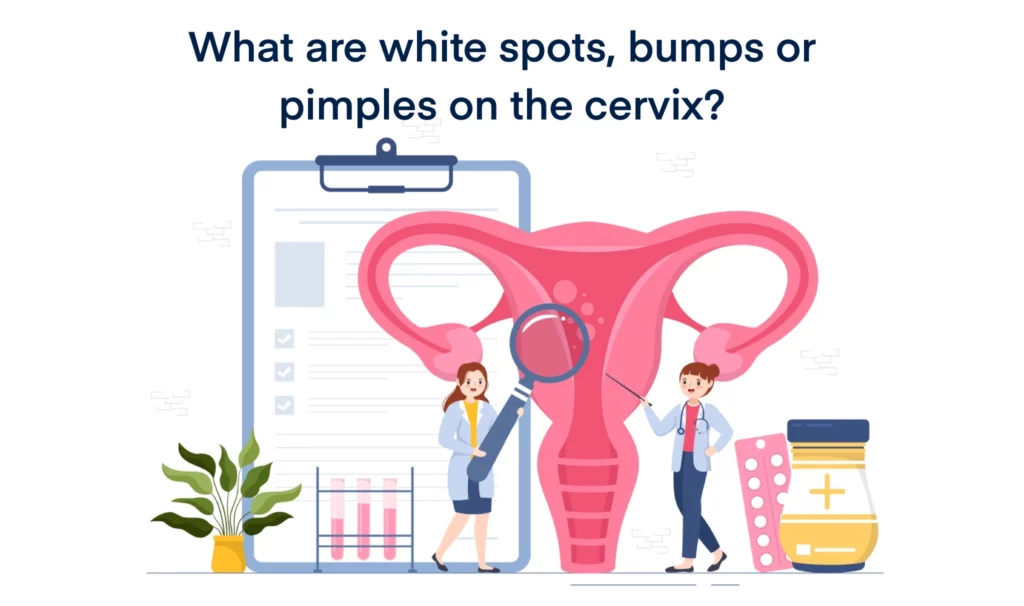
Nabothian cysts is the medical term for white spots, bumps or pimples on the cervix. Otherwise called the cervical canal, the cervix is the entryway from the vagina to the uterus. Nabothian cysts are tiny cysts, varying in size from 2 millimeters to 4 centimeters, that are filled with mucus that the cervical glands discharge.
There are also other medical names for nabothian cysts: mucinous retention cysts, epithelial cysts, and cervical cysts. They all refer to the same condition.
These cysts are most common in childbearing women and appear as tiny white bumps, spots or pimples in diagnosis. In most cases, these cysts are not harmful or cancerous at all. Women in their reproductive years are expected to develop cysts, not just nabothian cysts specifically. Nabothian cysts occur when the cervical gland becomes blocked by skin cells. The blockage causes mucus to build up and result in a white tiny cyst on the cervix.
Are spots on the cervix common?
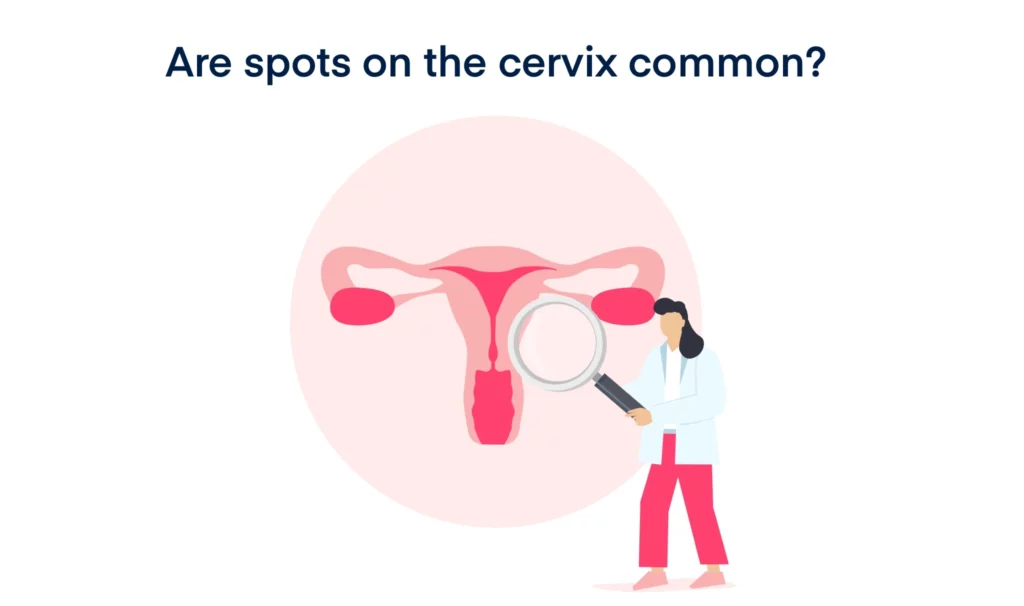
Most women in their reproductive age are likely to have several types of cysts (spots or bumps), but nabothian cysts are most common. After delivering a child, a woman can develop these cysts due to the regrowth of tissues on the cervix that block the cervical glands and discharge little amount of mucus under the skin of the cervix. This causes the occurrence of tiny cysts that are opaque, that appear as white spots, bumps or pimples.
Having nabothian cysts is very common in women who have just given birth. These cysts are not dangerous, cancerous and do not impose any harm to the woman’s body. Moreover, nabothian cysts are often misunderstood as a symptom of cervical cancer, but they are not. These cysts are benign and improve on their own without requiring any medical involvement.
What causes white spots on the cervix?
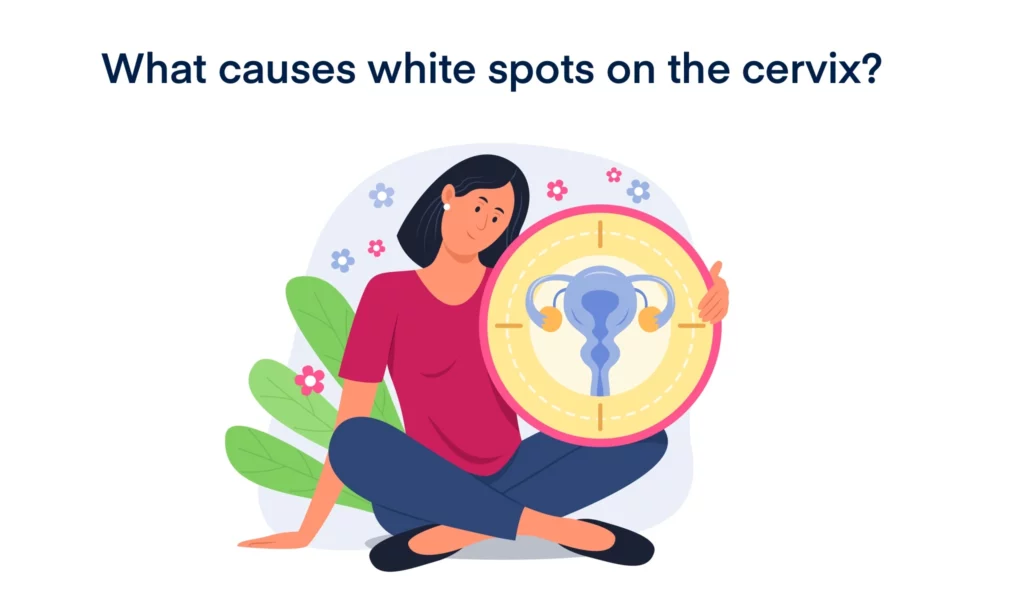
There are two most common causes why a woman develops nabothian cysts. One is childbirth, and another one is physical trauma.
Nabothian cysts are often seen in women during their reproductive age and most commonly after delivering a child. A woman’s reproductive age starts from her puberty till menopause, which can go as long as till your 40s or 50s. A woman can develop cervical cysts anytime throughout these years.
During childbirth, cervical glands that produce mucus can become blocked due to the excess skin cell production in the cervix. The excess skin cells trap the mucus and cover them. This causes the mucus to accumulate in small pockets and develop as small cysts that are opaque and look like small white spots, bumps or pimples.
On the other hand, nabothian cysts caused due to physical trauma are a result of chronic cervicitis, a condition in which cervix tissue becomes inflamed.
Do nabothian cysts have associated symptoms?
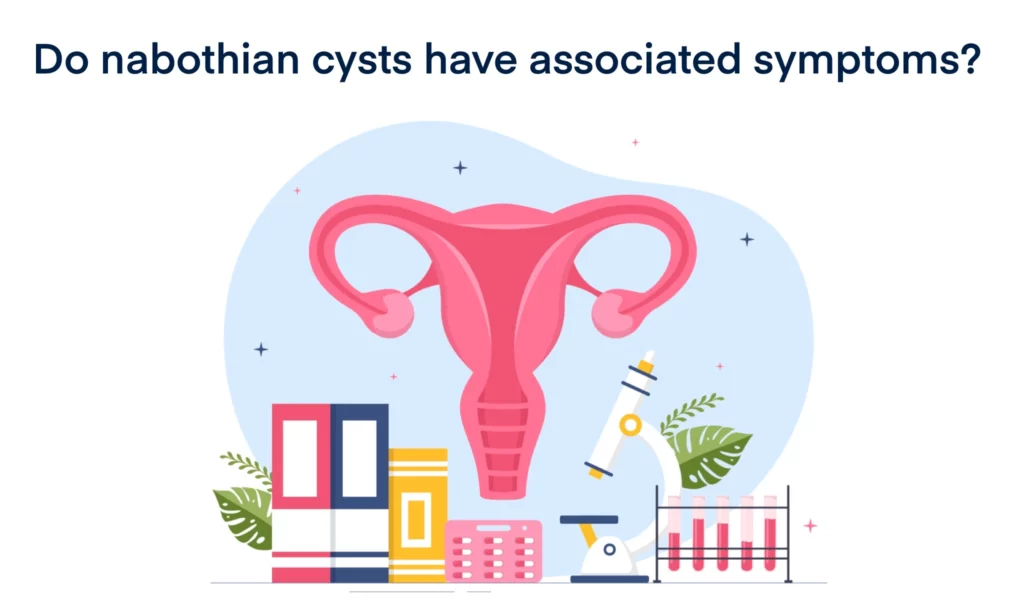
No. Usually, nabothian cysts do not have any associated symptoms such as pain, discomfort, bleeding or anything. You are most likely to find about these cysts during a normal routine pelvic examination. These cysts may be found when your doctor examines your cervix for other problems. They appear as white or a bit yellowish spots, pimples or bumps, and may vary in size from 2 millimeters to 4 centimeters.
However, if you are experiencing any symptoms such as pelvic pain, vaginal bleeding or unusual discharges, you must see your doctor immediately. These symptoms can be an indication of other serious conditions in the cervix that might require examination and treatment.
How are nabothian cysts diagnosed?

Screening and diagnosis of nabothian cysts take place during the pelvic examination. A gynecologist can use different screening techniques such as an MRI, CT scan or pelvic ultrasound for diagnosis.
Other than that, colposcopy is another advanced technique gynecologists have started to use to screen the cervix, vagina and vulva for problems. Colposcope has a magnifying glass that gives an enlarged picture of the cervix and presence of cysts or other bumps in the cervix.
Doctors often take a sample of cyst to examine and confirm the presence of nabothian cysts. In very rare cases, another type of cyst called adenoma malignum can be present, which is a rare type of cervical cancer.
Do nabothian cysts require treatment?
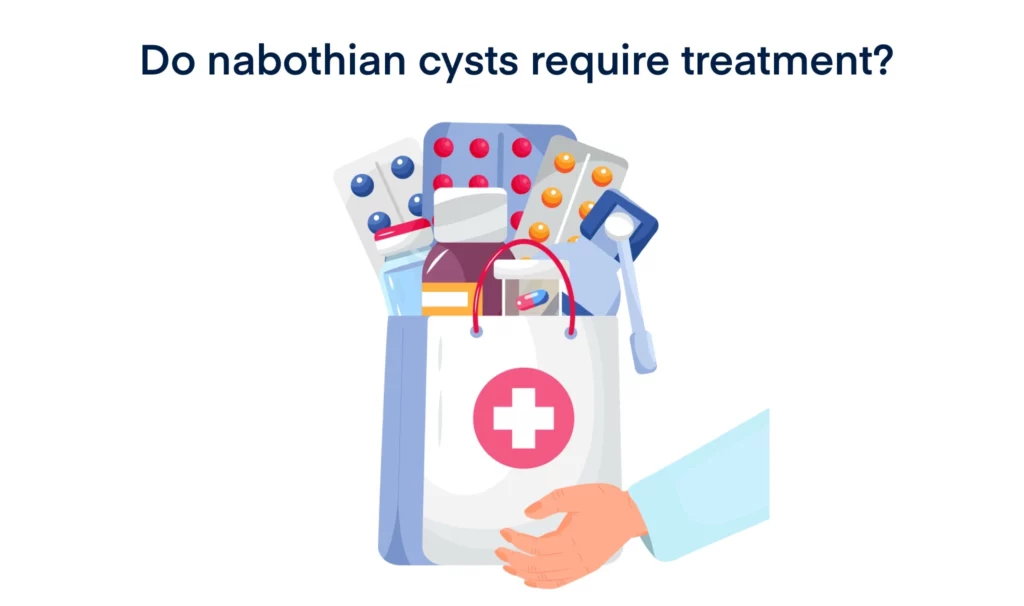
No. Usually they do not. Development of nabothian cysts is a benign condition in childbearing women. Women who are diagnosed with these cysts do not usually require any specific treatment or medical attention.
However, in a few cases, these cysts become enlarged and cause severe discomfort and may affect the anatomy of the cervix. In such cases, the doctor may recommend removing the enlarged cysts through draining, excision, electrocautery ablation or cryotherapy.
During excision, your doctor will remove the enlarged cysts with a blade. Electrocautery ablation technique uses electric current to create heat and remove the targeted tissues. Cryotherapy requires applying liquid nitrogen on the cysts to freeze them, and then excise them by shattering.
Nabothian cysts and pregnancy
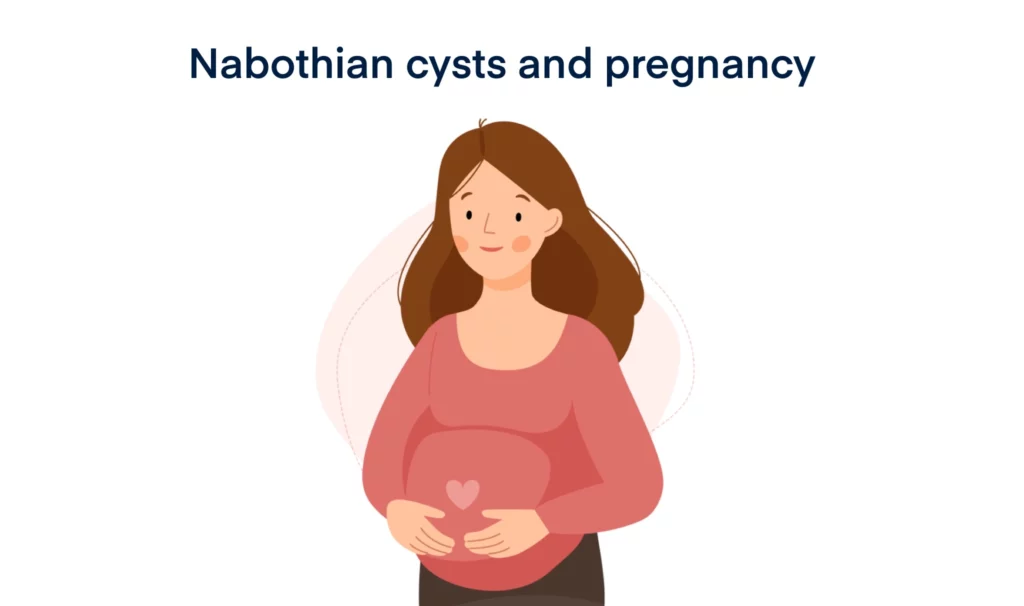
It is very common to discover the presence of nabothian cysts in the cervix during pregnancy or after delivering a child, after a routine pelvic examination.
As we already mentioned, the cervix is the entryway to the uterus from the va gina to the uterus. Your cervix allows the sperm to travel from the vagina to the uterus. It also allows the menstruation fluid to pass from the uterus to vagina.
When a woman becomes pregnant, the cervix becomes closed to keep the fetus inside the uterus. Once the woman delivers the child, the cervical glands undergo a process called metaplasia in which skin cells start to develop in excessive amounts to keep the mucus inside the cervix. This causes the development of small mucus filled pockets around the cervix, called the nabothian cysts.
Developing these cysts are common for women who have just given birth. And, they do not affect pregnancy, the baby or the woman herself after the pregnancy at all. However, if these cysts are associated with some severe discomforting symptoms, you can talk to your gynecologist for help, as it might be a sign of some other condition.
Conclusion
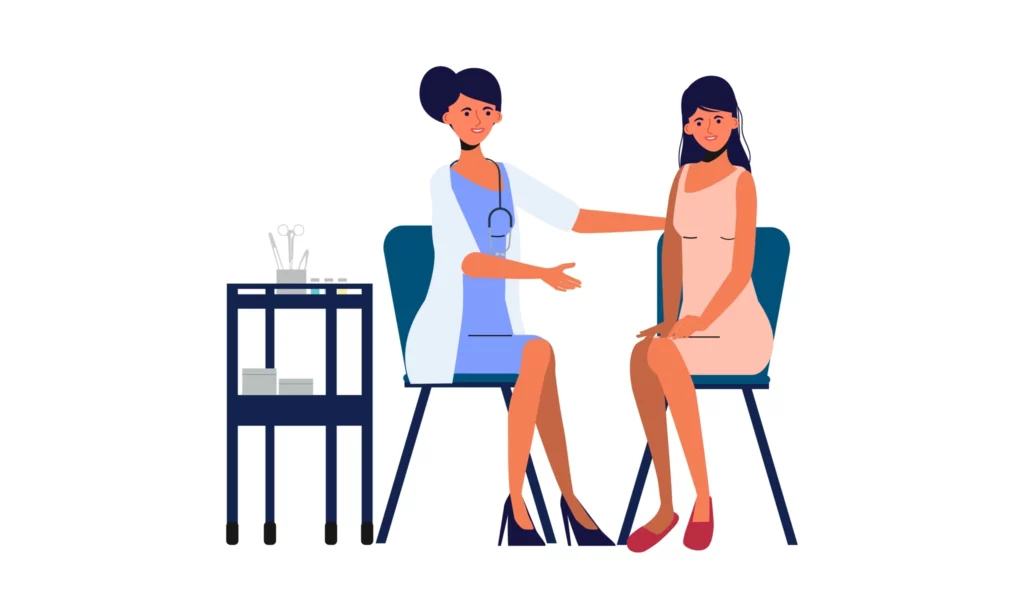
Nabothian cysts are common, harmless and self-improving. Though these cysts cannot be prevented, they do not also put you at risk of any short-term or long-term health condition. If you are diagnosed to have these cysts, do not bother as they do not affect your normal life, your pregnancy, or cause any discomfort at all.
Doctors also do not recommend any medicines, treatments or excision of nabothian cysts until they interfere with the anatomy of the cervix or become enlarged enough to cause discomfort to the patient. If you experience symptoms such as vaginal bleeding, unusual discharge or pelvic pain, you may ask your doctor for a proper examination and treatment if needed.


